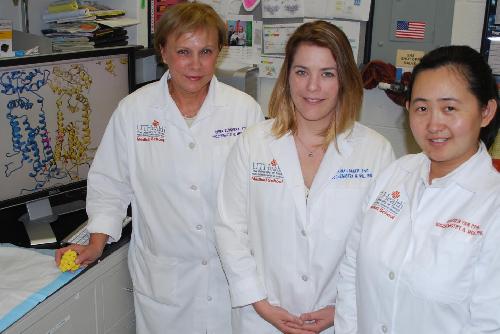Calcium is a crucial element in the body that controls thought, movement and other bodily functions. These events are directed by specialized proteins called ion channels that allow the flow of calcium ions in and out of cells and among cell compartments. For years, scientists have been unsure how calcium ion channels function.
New atomic scale images of the structure of calcium's gatekeeper, IP3R, could go a long way toward solving this mystery and lead to treatments for the many diseases tied to channel malfunctions.
The IP3R channel was imaged by scientists in the Department of Biochemisty and Molecular Biology at The University of Texas Health Science Center at Houston (UTHealth). Their findings appear in the journal Nature.

"We now know the structure of the gating machinery of IP3R," said Irina Serysheva, Ph.D., the study's senior author and an associate professor of biochemistry and molecular biology at UTHealth Medical School. "This work will fuel many functional and translational studies and allow for new drug design venues."
When the IP3R calcium channel receives signals, it creates a pathway for calcium ions to move across cell membranes. While it works flawlessly most of the time, serious health issues occur when everything does not go to plan.
"Those health issues include Alzheimer's disease, Parkinson's disease, Huntington's disease, cardiac hypertrophy, heart failure, cancer and stroke," she said.
The study involved IP3R channel proteins that were purified from rat brain. The researchers used electron cryomicroscopy and computer reconstruction techniques to visualize the channel at near-atomic resolution. They then built a model representing the protein's atomic 3-D arrangement as it may exist in the cell.
"Knowledge of the 3-D structure of these channels is required to understand the molecular basis of channel opening and closing, and how this process is controlled by a wide variety of endogenous molecules and pharmacological modifiers," said Rodney Kellems, Ph.D., professor and chair of the Department of Biochemistry and Molecular Biology at UTHealth Medical School.
"We can't explore function if we don't know structure," Serysheva said.




Comments